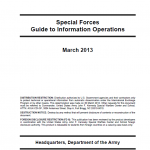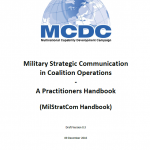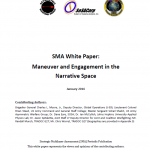All assets and capabilities at a commander’s disposal have the capacity to inform and influence selected audiences to varying degrees. While specific assets termed as “information-related capabilities” are information-centric in mission and purpose, others are standard capabilities that inform and influence officers use for planning to support commanders’ information strategy and mission objectives. The primary information-related capabilities that support inform and influence activities typically include, but are not limited to, public affairs, military information support operations, combat camera, Soldier and leader engagement, civil affairs, cyber electromagnetic activities, counterintelligence, operations security, military deception, and others so designated by a commander. In addition to the primary information-related capabilities, there are operational capabilities not solely designed to inform or influence that commanders can designate to assist in achieving mission objectives, such as maneuver forces, engineers, and medical units. Success depends on commanders and staffs effectively employing all available operational assets to best shape the information environment.
Read more →




